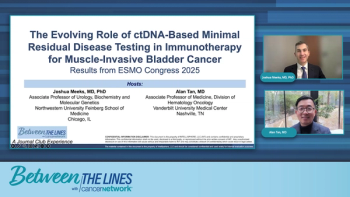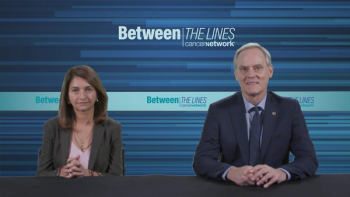
Frontline Treatment Options for Melanoma
Panelists discuss how the combination immunotherapy approach is superior to monotherapy for most melanoma patients, with specific exceptions such as desmoplastic melanoma where monotherapy shows remarkably high response rates.
Episodes in this series

Combination vs Monotherapy Considerations
Key Discussion Points:
- Phase 3 clinical trials have confirmed superiority of dual immunotherapy over monotherapy in metastatic melanoma
- Patient-specific factors including comorbidities, disease burden, and LDH levels guide therapy selection
- Certain patient populations may still benefit from PD-1 monotherapy over combination approaches
Key Points for Physicians:
- Desmoplastic melanoma patients demonstrated high response rates (89%) to PD-1 monotherapy with 33% complete response rate in the SWOG S1512 study, supporting monotherapy as first-line in this subtype
- Consider monotherapy for patients with solid organ transplants, severe autoimmune disease, cutaneous-only or lung-only disease, and elderly patients
- Balance efficacy goals with toxicity risk when selecting therapy intensity
Notable Insights:
Age is an important consideration in therapy selection - doubling of PFS with combination therapy must be weighed against nearly doubled grade 3-4 toxicity rates (19% with nivolumab/relatlimab vs higher rates with ipilimumab combinations)
Clinical Significance:
While combination immunotherapy has demonstrated superior efficacy in melanoma, patient selection based on disease-specific factors and comorbidities remains critical to balance response benefit with toxicity risk.
Newsletter
Stay up to date on recent advances in the multidisciplinary approach to cancer.




















































































